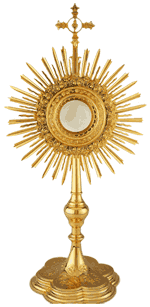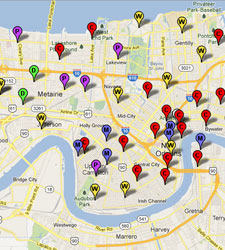“Our Father, who art in Heaven, Hallowed be Thy name…” we pray every day. “Hallow,” there’s that word we’re hearing a lot about at this time of year. And it means “holy.” So what does “Halloween” mean, and where does it come from?
The origins of Halloween are very Christian and very American. Although it’s true that the ancient Celts of Ireland and Britain celebrated a minor festival at this time of year which commemorated the end of summer and the beginning of the darkness of winter, that feast wasn’t on a specific day but tied to the position of the sun. Halloween specifically falls on the last day of October because it’s the Evening before the Feast of All Saints, or “All Hallows,” which falls on November 1. So it’s All Hallow’s Eve, contracted to Hallowe’en.
In the early Church, Christians were accustomed to solemnize the anniversary of a martyr’s death. Frequently groups of martyrs suffered on the same day, which led to a joint commemoration. During the persecutions of Diocletian (circa 300 A.D.) the number of martyrs became so great that a separate day could not be assigned to each. Since the Church felt that each martyr should be venerated, it appointed a common day for all of the martyrs. We hear mention of an “all martyrs” day beginning in the 4th century, and the feast was firmly established by Pope Boniface IV’s consecrating the previously pagan Pantheon in Rome to the “Blessed Virgin and All the Martyrs” on May 13, 609. The feast remained on that date until Pope Gregory III (731-741) consecrated a chapel in the Basilica of St. Peter to “All the Saints” and fixed the anniversary for November 1. Pope Gregory IV (827-844) extended the celebration to the entire Church. In English, the day before November 1 was the feast’s evening vigil, “All Hallows Even,” or “Hallowe’en.” In those days Halloween didn’t have any special significance for those long-dead Celtic pagans!
About a hundred years later, in 998, St. Odilo, the abbot of the powerful monastery of Cluny in southern France, added a celebration on November 2. Since November 1 was the day when we honored the saints, he felt that we also needed a day to pray for the souls of the faithful departed. This feast, called All Souls Day, spread from France to the rest of Europe. All Souls Day is a solemn feast to remember those who have died and now are in Purgatory, being cleansed of their venial sins and atoning before entering fully into Heaven. The importance of the feast was made clear by Pope Benedict XV (1914-22), when he granted all priests the privilege of celebrating three Masses on All Souls Day: one, for the faithful departed; one for the priest’s intentions; and one for the intentions of the Holy Father. Only on a handful of other very important feast days are priests allowed to celebrate more than two Masses.
So now there’s a day for the Saints and a day for the Souls in Purgatory. What about Halloween? Although there are many other stories, one goes that some less than devout people in Ireland thought that the people in Hell ought to get a day, too. So they devoted the Eve of All Saints by engaging in all types of mischief, and they added a sinister air to it. As the custom came over to America, it took on a life of its own.
Also, since Protestants didn’t celebrate All Saints Day or All Souls Day, the idea of “trick or treat” may have its origins in the persecutions of Catholics after King Henry VIII took over the Church. As an illegal minority, they could be bribed or persecuted! While many of the origins are hard to trace definitively, Halloween as it’s celebrated in America is a unique experience. But the date is tied to the celebration of All Saints!
Since Monday is All Souls Day, let us pray for these departed members of our extended parish family.




